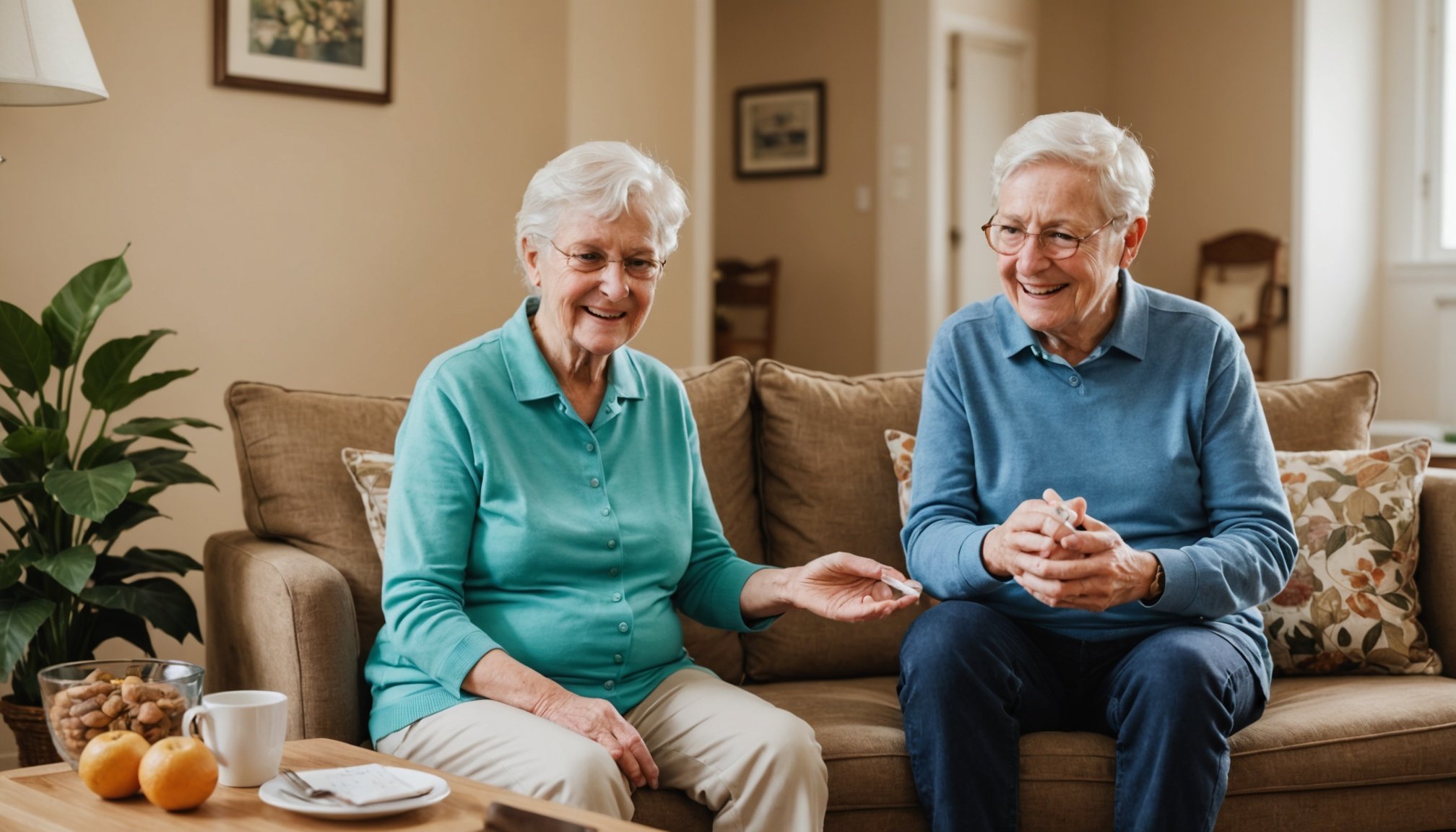As we age, our health needs change significantly. For seniors, adapting their living spaces is essential to ensure safety, comfort, and independence. This article aims to provide practical advice on how older people can modify their environments to meet their unique requirements. By understanding the modifications available and the support services accessible, we can create a community where seniors thrive in their own homes, enhancing their quality of life.
Understanding the Needs of Seniors
Recognizing the specific needs of seniors is the first step in adapting their living spaces. As people age, they may experience a variety of health challenges such as reduced mobility, vision impairment, or cognitive decline. These changes can impact their ability to perform daily activities and manage their environment effectively.
Also to see : How can proper footwear impact the health and mobility of seniors?
To address these issues, it is crucial to evaluate the current space and identify potential hazards or barriers. Common concerns include clutter, poor lighting, and the arrangement of furniture. For example, a senior with limited mobility may struggle to navigate narrow hallways or step over thresholds. By understanding these challenges, you can make informed decisions on how to modify the space to better support their needs.
Moreover, it’s vital to involve seniors in the decision-making process. Their preferences and comfort levels should guide the modifications. Engaging them not only ensures that the changes are suitable but also empowers them, fostering a sense of independence. Listening to their concerns and suggestions helps create a living environment that feels personal and supportive.
Also read : What are the signs that a senior might need assistance at home?
In summary, identifying and understanding the needs of seniors is fundamental to adapting their living spaces. This process requires careful consideration of their individual challenges and engaging them in discussions about the necessary modifications. By doing so, we set the groundwork for a safer and more accommodating home.
Key Modifications for Senior Living Spaces
Once you have assessed the unique needs of seniors, the next step is to implement key modifications that enhance their living environment. These adjustments can significantly improve safety, accessibility, and overall quality of life.
Start with the bathroom, a space that often poses significant risks. Installing grab bars near the toilet and in the shower can provide stability and prevent falls. Consider adding a shower bench or a handheld showerhead, which can make bathing easier and safer. Furthermore, non-slip mats or flooring can help in reducing the risk of slips and falls.
Transitioning to the kitchen, consider making adjustments that facilitate ease of use. Lowering countertops and rearranging cabinets to ensure frequently used items are at eye level can reduce strain and prevent accidents. Utilizing appliances with automatic shut-off features can also help ensure safety when cooking.
In the living area, furniture arrangement is key. Create open pathways and ensure furniture is positioned to allow for easy navigation. Removing unnecessary clutter and using non-slip mats can prevent trips and falls. Additionally, incorporating good lighting is essential. Installing brighter bulbs and using task lighting can improve visibility, especially for seniors with vision impairments.
Lastly, consider the overall layout of the home. Single-level living or a bedroom on the main floor can significantly reduce the need to navigate stairs, which can be challenging for older individuals. If stairs are unavoidable, adding sturdy railings can provide the necessary support.
Implementing these practical modifications can help create a safer and more accessible living environment for seniors, ensuring they maintain their independence while managing their health needs.
The Role of Technology in Senior Living Adaptations
Technology plays a critical role in transforming senior living spaces. With advancements in innovation, many tools and devices can help older people manage their health and enhance their quality of life.
Smart home technology is one area that has seen significant growth. Devices like smart thermostats, lights, and security cameras can be controlled remotely, allowing seniors to manage their environment from their smartphones or tablets. This is particularly beneficial for those with mobility challenges, providing them with greater control over their space.
Another valuable technological advancement is the use of health monitoring systems. Wearable devices can track vital signs, including heart rate and activity levels, alerting seniors or caregivers if there are any concerning changes. This can significantly improve health outcomes by enabling timely interventions, thus ensuring that seniors receive the support they need without frequent trips to the doctor.
Additionally, telehealth services have gained popularity, especially in light of recent global events. Seniors can consult with healthcare professionals from the comfort of their homes, reducing the need for travel and thereby minimizing the risk of exposure to illnesses.
Voice-activated assistants are also becoming commonplace. These devices can help seniors set reminders for medications, control smart home features, and even connect them with family members or emergency services with simple voice commands. This can provide peace of mind, both for seniors and their families.
In conclusion, integrating technology into senior living adaptations can significantly enhance their independence and well-being. By leveraging these advancements, we can create an environment that not only meets their health needs but also enriches their day-to-day lives.
Community Support and Services for Seniors
Adapting the living spaces of seniors is not solely about physical modifications; it also involves accessing the right community support and services. Building a robust support network is essential for enhancing the quality of life for older people.
Many communities offer services tailored to the needs of seniors, including transportation assistance, meal delivery programs, and social activities. Engaging in community activities can combat feelings of isolation and promote social interaction, which is crucial for mental health. Local senior centers often provide a variety of programs aimed at fostering community connections and providing support.
In addition, home health care services can be invaluable. These services range from skilled nursing care to simple household assistance, allowing seniors to maintain their independence while receiving the necessary support. This can include help with daily tasks, medication management, and personal care, ensuring that their health needs are adequately met.
Furthermore, connecting with local volunteer organizations can provide additional support. Many volunteers are eager to help seniors with errands, companionship, or home maintenance. This not only enhances the living environment but also fosters a sense of community.
Don’t overlook the importance of family and friends in this support system. Encouraging relatives to participate in the care and modification process can be beneficial. They can offer insights and help implement changes, ensuring that the living space adapts to their loved one’s needs effectively.
In summary, community support and services play a vital role in helping seniors adapt their living spaces. By leveraging these resources, older individuals can maintain their independence while ensuring their health needs are met in a nurturing and supportive environment.
Adapting living spaces for seniors is a multifaceted process that involves understanding their unique needs, implementing thoughtful modifications, embracing technology, and leveraging community support. By addressing these areas, you can help enhance the quality of life for older individuals, allowing them to live safely and independently in their own homes.
The journey toward creating a supportive environment is ongoing and requires collaboration among seniors, their families, and community resources. Remember, every small change can make a significant difference in their lives, ensuring they find comfort and security in their surroundings. By taking these steps, we contribute to a community where seniors can thrive, age gracefully, and enjoy their lives to the fullest.











